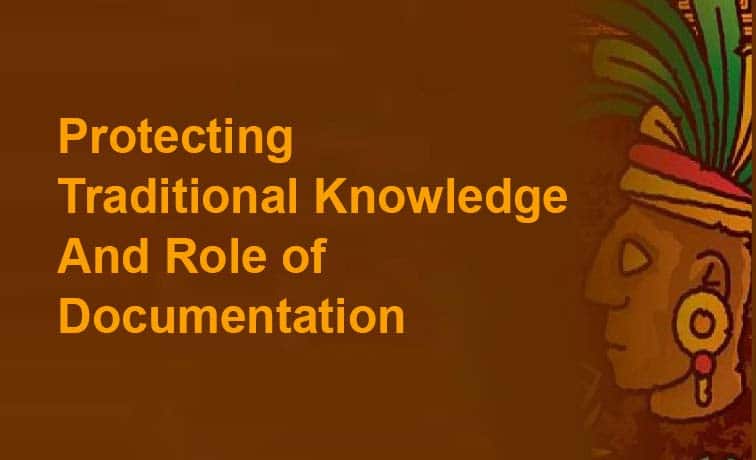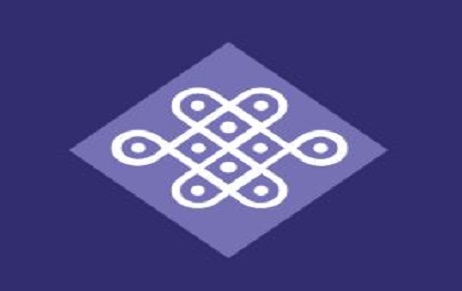Introduction What is Artificial Intelligence? Creating computer systems capable of carrying out activities that need…
Role of Documentation in Protecting Traditional Knowledge
Domestic and International laws prohibit the patenting of traditional knowledge of any local community. However, traditional knowledge, such as unique plants and their use is being usurped by unscrupulous players by patenting them in different countries. The only way to stall such moves is by providing prior art evidence proving that the knowledge was already available and practiced. Documentation of old references/books, therefore, plays an important role in protecting traditional knowledge. The challenge exists in protecting the undocumented or the traditional knowledge available in local/ancient scripts. In some cases, traditional knowledge is also available in local stories, legends, folklore, rituals, and songs, which are not properly documented.
The importance of documentation can be appreciated by the fate of a patent application number CA2454171, filed by a US multinational firm, Metaproteomics LIc, at the Canada Intellectual Property Office. The application was titled “Curcuminoid compositions exhibiting synergistic inhibition of the expression and/ or activity of Cyclooxygenase-2”. The priority date of the application no CA2454171 was 17-Jul-2001 that was published on 30-Jan-2003. It claimed the use of turmeric, apple, basil, kalamegha, and licorice for the treatment of inflammation, psoriasis, gastritis, and as an anti-inflammatory to be novel. The Traditional Knowledge Digital Library (TKDL), a unit of the Council of Scientific & Industrial Research (CSIR), submitted prior art evidence in the form of references in books from the 18th century to the 20th century citing evidence that turmeric, apple, basil, kalamegha, and licorice have been used alone or in combination with a few other ingredients for the treatment of inflammation, psoriasis, gastritis and as an anti-inflammatory in the Indian systems of medicine. The books that were used by TKDL for citing prior art of evidence includes Khazaain-al-Advia, Muheet-e-Azam, Vaidyamanorama, RasayogaSagara, Rajanighantauh, Bhavaprakasa, Siddhabhesajamanimala, and Ilaaj-al-Amraaz.
By presenting these prior art references, India was successfully able to foil the firm’s bid to patent the medicinal use of turmeric. Based on TKDL evidence filed for the application no. CA2454171, CIPO declared the application as ‘Dead’ on 28-Sep-2012.
The Traditional Knowledge Digital Library has been playing a crucial role in protecting traditional Indian knowledge. The chronology to a build-up of the TKDL and their related activities is as under:
In Nov 2002, internationally recognized specifications and standards for setting up of Traditional Knowledge (TK) databases and registries based on TKDL specifications were formed that included TK experts from China, Philippines, India.
Access Policy Issue Committee (APIC) was the constitution in August 2002, their responsibilities include:
- Frame policies on accessing the TKDL database
- Decide on matters relating to the dissemination of TKDL
- Meet defensive and positive objectives of TKDL
In March 2003, the data abstraction work on 36,000 Ayurveda formulations for creating TKDL in five languages, i.e. English, German, Spanish, French, and Japanese was completed. It was followed by a demo CD containing a sample of 500 formulations in October 2003.
A meeting held in June 2004 with the Health and Family Welfare Minister on providing access to the TKDL database to the European Patent Office (EPO). EPO requested access to TKDL in July 2005.
An approval on access to the TKDL database was granted to International Patent Offices (IPOs) by Cabinet Committee on Economic Affairs in June 2006. The Access Agreement was sent to EPO in July 2006.
The US Patent and Trademark Office (USPTO) requested access to the TKDL database in December 2006. USPTO agreed in principle to TKDL Access Agreement in May 2009.
TKDL Access Agreement concluded with the Canadian Intellectual Property Office (CIPO) in Sep 2010.
An international conference was held in Mar 2011 on ‘Utilization of the Traditional Knowledge Digital Library (TKDL) as a Model for the Protection of Traditional Knowledge’ that was organized by the World Intellectual Property Organization (WIPO) and the Council of Scientific & Industrial Research (CSIR).
First Amending Agreement to TKDL Access Agreement with EPO concluded in Jul 2012 and with CIPO in Aug 2012.
Similar to India’s TKDL, several other countries are creating libraries of their traditional knowledge, which is being actively used by patent authorities while deciding the patentability of new applications.
As can be observed from the activities of the different organizations working to protect the traditional knowledge from being patented, the primary issue lies with undocumented traditional knowledge or the documents existing in local languages. Government institutions interested to protect the traditional knowledge of the local communities need to create a proper team for proactively documenting the undocumented practices/traditional knowledge. They should interact with local communities including tribal who poses huge traditional knowledge, collect the evidence of early uses, and document it as per the specified format. The instructions, such as the Archaeological Survey of India can be used effectively to validate the early usage or to establish the claims of traditional knowledge.
About the Author: Mr. Rakesh Kumar Gupta, Senior Patent Associate at Khurana & Khurana, Advocates and IP Attorneys and can be reached at Rakesh@khuranaandkhurana.com




